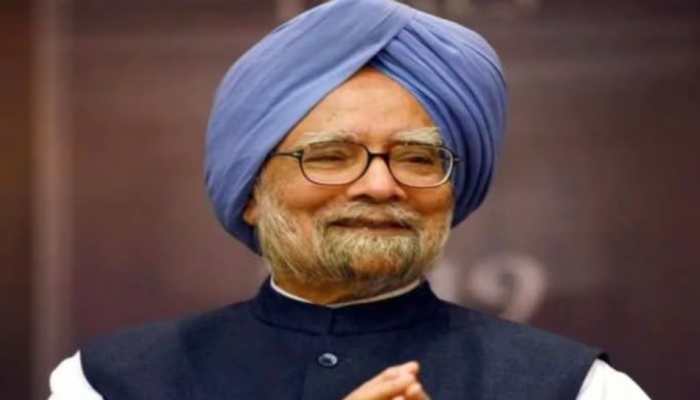The story of the sitar Beatles used in 'Norwegian Wood'
Do you know that during the recording of the Beatles' iconic song 'Norwegian Wood', one of the strings of the sitar played by George Harrison broke leaving him with no clue about how to replace it until he was helped by none other than Indian political activist in Britain Ayana Angadi.
Trending Photos
)
New Delhi: Do you know that during the recording of the Beatles' iconic song 'Norwegian Wood', one of the strings of the sitar played by George Harrison broke leaving him with no clue about how to replace it until he was helped by none other than Indian political activist in Britain Ayana Angadi.
This and several other titbits about the Fab Four and their India connection are mentioned in an article in "The Equator Line" magazine written by American freelance writer Robert Cepican.
Harrison bought the sitar from a shop called Indiacraft on Oxford Street in London and John Lennon suggested using it for the first time in the song 'Norwegian Wood'.
The Beatles-India story took an interesting twist during the recording of 'Norwegian Wood'. Whether it was divine intervention or the product of a 'real crummy' sitar, one of the strings on the instrument broke," writes Cepican in the piece titled "The Yogi and the Fab Four".
Written by Lennon and Paul McCartney, 'Norwegian Wood' was recorded in October 1965 and released on December 6, 1965. Cepican, who is the author of "Yesterday Came Suddenly, The History of the Beatles" and is working on another book on the legendary British band, says Harrison had no clue how to replace the broken string.
"Producer George Martin stepped in and suggested that he contact Ayana Angadi, the co-founder of the Asian Music Circle (AMC). Angadi had provided George Martin with authentic Indian musicians five years earlier on a song, recorded with Peter Sellers and Sophia Loren, called 'Goodness Gracious Me'," he writes.
Shankara Angadi, Ayana's son, recalls, "As luck would have it, we did have some sitar strings in the house, and the whole family went down to the studio at Abbey Road and watched them record, from behind the glass."
The simple act of a sitar string breaking had a profound influence on the direction of Harrison's life. Indian music had been completely unknown to him but for the next two years, Ayana Angadi and the AMC would mentor Harrison in the study of Indian classical music. The organisation had two sitar teachers, one of whom became Harrison's first teacher, but according to Shankara, no one seems to remember his name.
The AMC would provide authentic Indian musicians for Harrison's next two Indian songs ? 'Love you to', which appeared on 'Revolver'; and 'Within you without you', which appeared on 'Sgt. Pepper's Lonely Heart Club Band'. George wrote 'Love you to' to draw more attention to the sitar. It was also the first Beatles recording to give credit on the album cover to a musician outside the group, an Indian musician named Anil Bhagwat, who played the table.
Cepican says that it was through the AMC that Harrison was introduced to the man who would be his life-long friend and teacher, Ravi Shankar. Harrison was the first Beatle to visit India. Following the group?s last live concert performance at Candlestick Park, San Francisco in August 1966, he travelled to Mumbai to study the sitar with Ravi Shankar.
"I went to India for about six weeks. Ravi would give me lessons, and he?d also have one of his students sit with me. My hips were killing me from sitting on the floor, and so Ravi brought a yoga teacher to start showing me the physical yoga exercises. It was a fantastic time...," Harrison once recalled.
The Beatles as a group arrived in Rishikesh on February 16, 1968, eager to take part in an advanced course in meditation at Maharishi Mahesh Yogi's Himalayan retreat. Attendees included folk singer Donovan, Mike Love of the Beach Boys, actress Mia Farrow and her sister Prudence.
The Beatles led a simple lifestyle in the stone cottages at the Maharishi's ashram and ate vegetarian meals. Lennon and Harrison were both vegetarians, McCartney was a meat-eater and Ringo was on a restricted diet.
The Beatles' time in Rishikesh was spent attending 90-minute lectures in the afternoon and evening. They discovered that meditation provided answers to their spiritual questions and found drugs less capable of helping them find the inner peace they sought, Cepican writes.
Much of their free time was spent writing songs, which resulted in one of their most productive periods as songwriters, collectively writing 48 songs that would appear on the "White Album" and "Abbey Road," he says.
Some of the songs were directly inspired by the lectures they attended and by their experiences in Rishikesh. Lennon wrote 'Child of Nature', which he later reworked and renamed 'Jealous Guy' for the "Imagine" album. McCartney's 'Mother Nature's Son' was similarly inspired by his experiences with meditation.
The Beatles would continue to use Indian instruments and express Indian spirituality in their songs and on their records. George wrote 'The Inner Light', which was recorded in Mumbai one month before attending the Maharishi's retreat. Lennon wrote 'Across the Universe', which was influenced by his experiences with meditation. The chorus included the mantra 'Jai guru deva om' that the Maharishi gave them.
Stay informed on all the latest news, real-time breaking news updates, and follow all the important headlines in india news and world News on Zee News.
Live Tv







)
)
)
)
)
)
)
)
)
)
